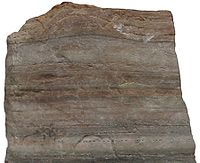Plate Tectonics are located in the Litosphere which is located in the second layer of the earth, the mantle. These plates are in constant and slow movement but the convention currents can cause these plates to move sharply which causes the disasters that we face today as these are volcanoes, earthquakes, tsunamies, etc. As good examples we have the Subduction Zone which is the place where an oceanic crust meets with a continental crust. The oceanic crust is heavier so it subducts under the continental crust creating volcanoes.As a good example, the continental drift which consists in the separation of continents provoked by the plate tectonics. Alfred Wegner discovered this theory and defended that the earth contained plate tectonics which moved causing the separation of land as it caused the Pangaea to come apart in 7 continents. Another example is the Ring of Fire which is located in the borders of the pacific ocean, the plate tectonics are located in the borders since it is where oceanic crust and continental crust meet thus many disasters are caused there and that is the reason of the name ''RING OF FIRE''. I believe the theory of plate tectonics is well proven and its movement is the reason of the disasters that we all witness.
Reflection
What did you enjoy most about this project and why?
What I enjoyed most about this project was completing the labs because by this I could learn more about how the plate tectonics are the reason of the natural disaster in the Earth and also because it resulted me a interesting way to learn from.
What was most challenging for you during this project and why?
I don't think any part was challenging because everything was pretty clear and understandable.
What new skills did you learn from doing this project?
I learned to create labs and explain to other people.
Is there anything that you could have done to improve any of your work? Explain.
I think being more creative by making my handouts because if I did, it would be easier for my classmates to understand about the topic in my presentation
What would you change about this project?
Creating more creative and funnier activities to do my projects.













